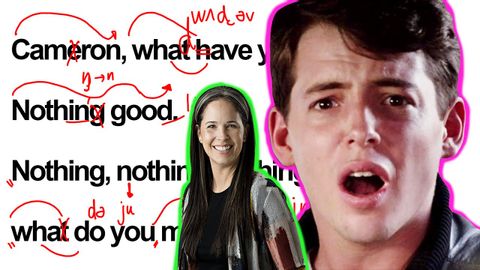Learn English with Movies – Ferris Bueller’s Day Off
Summer が 2020 年 08 月 05 日 に投稿  この条件に一致する単語はありません
この条件に一致する単語はありませんUS /prəˌnʌnsiˈeʃən/
・
UK /prəˌnʌnsiˈeɪʃn/
- n. (c./u.)発音;正確な発音;発音の仕方;発音ガイド
- n.言い回し;音楽の節;語句;句
- v.t./i.言い表す
- adj.(すぐには)分からない : 捉えにくい;微妙な
エネルギーを使用
すべての単語を解除
発音・解説・フィルター機能を解除

